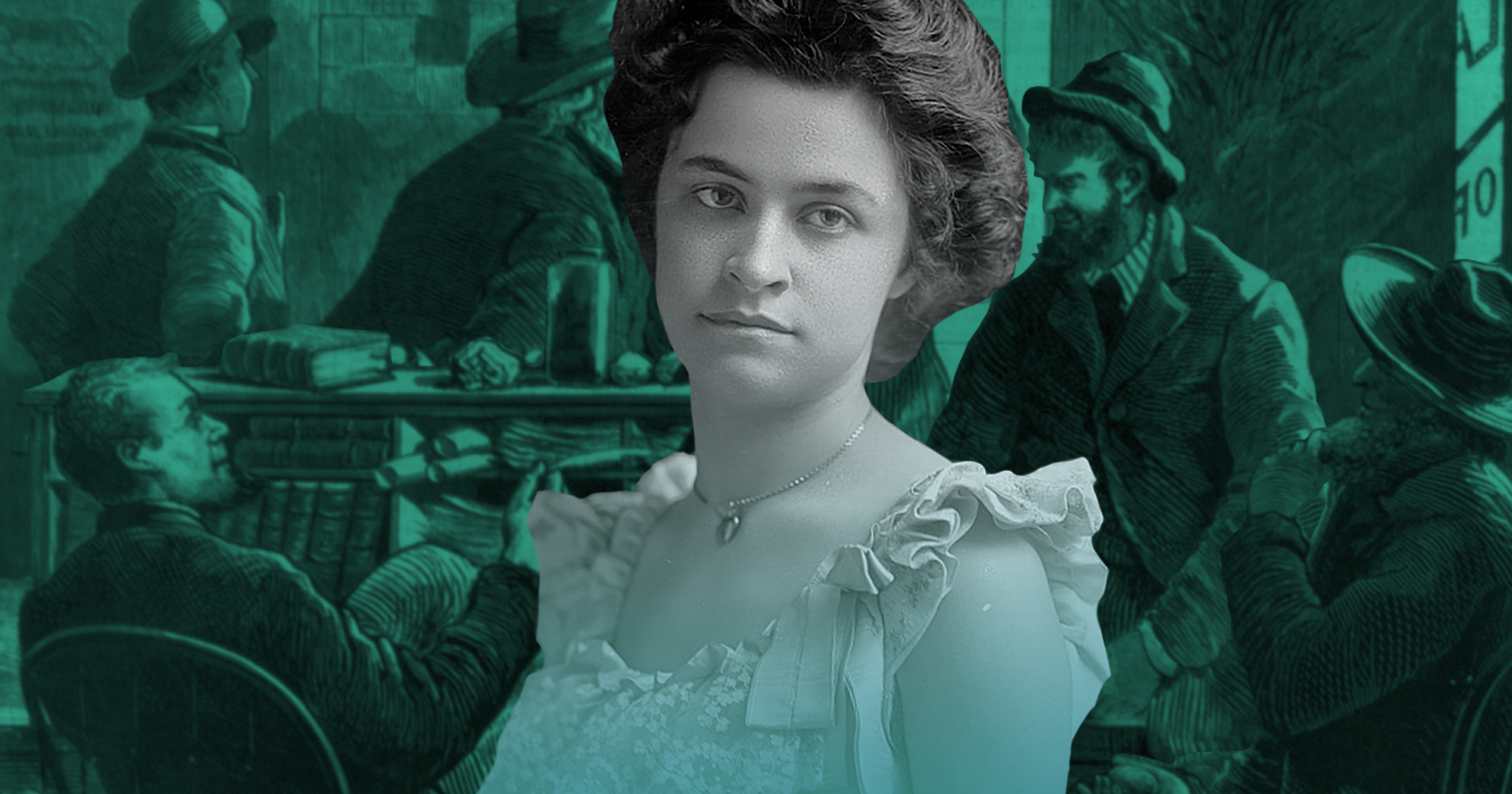
lesson 01 - kate warne & the baltimore plot
Hello! And welcome to Puppet History: Online University, fall semester 2020. Did The Professor predict COVID-19 by teaching us about the Black Death back in January? That’s just one rumor I’m circulating.
The Professor is obviously too important to deal with the minutiae of running a class, so I’m here to help him out. Who am I? My name’s Kari Koeppel, and I’ll be your TA this semester. I helped The Professor research this season of Puppet History, but before that I worked at BuzzFeed Video from 2014-2019, and was the head of BF’s research department for the second half of my tenure. I worked with all the Watcher boys back when they were first getting Worth It and BuzzFeed Unsolved off the ground, and now we’re all off doing our own things! I wrote a book that was published in May by Rockridge Press, called Strong Women: 15 Biographies of Influential Women History Overlooked, which highlights women who made their mark on the world but haven’t yet gotten their proper due. One chapter in that book is on the first woman detective, Kate Warne. More on her later.
Unfortunately The Professor likes to keep the information for each class close to his field jacket (which yes, does make my job as TA more difficult than it needs to be, but that’s neither here nor there). So you’ll have to tune into class each week! That’s why attendance is 90% of your grade. The other 10% is enthusiasm.
Now, Kate Warne.
We historians love a primary source, and the best source on Kate is her boss, Allan Pinkerton. Pinkerton wrote a series of books about his career that are ostensibly memoirs, but read like 1850s James Bond-esque spy novels. The Expressman and the Detective tells the story of Kate’s first mission on the Adams Express Company case (full text available in the link, if you wanna read a bit for yourself!). I love how Pinkerton describes Kate’s determination at the start of the case: “Kate Warne felt sure she was going to win. She always felt so, and I never knew her to be beaten.” And the way he describes Kate’s methods of acquiring information: “[Kate] walked a little way behind her, as was her habit. She was a very tall, commanding woman, and made this her habit so that she could glance at anything that Mrs. Maroney might read as they walked along.”
And then there’s Pinkerton’s The Spy of the Rebellion (full book at link). Under any circumstance: an amazing book title, could easily be the name of a Star Wars movie. And it’s an equally incredible read. Here’s a selection of chapter titles that could easily each be whole books I’d request from the library before their release date (my nerd is showing):
CHAPTER XVI.
A Female Traitor.—Suspicious Correspondence.—A Close Watch under Difficulties.—I am Arrested.—Exposure of the Treason of a Trusted Officer.—A Disgraced Captain.
CHAPTER XVII.
Timothy Webster in Baltimore.—An Encounter with a Fire-eater.—Webster Defends Himself.—Treason Rampant in the Monumental City.
CHAPTER XXV.
The Journey Resumed.—A Midnight Pursuit.—A Brave Woman.—A Deadly Encounter.—Scobell Defends Himself.—Death of a Rebel Spy.
The Spy of the Rebellion also reveals a few surprising connections between the Adams Express case and the Lincoln plot. First, Kate’s cover in Baltimore as Mrs. Barley of Montgomery, Alabama — a fake Southern identity so that the secessionist women would trust her — was based on her experiences living in Montgomery for several months while undercover for the Adams Express case. Later, after Pinkerton’s team learned of the assassination plans in Baltimore, Kate went to New York to try to convince Norman B. Judd, one of Lincoln’s advisors, of the situation’s seriousness, while Pinkerton had gone directly to Philadelphia to begin working on a solution. Judd was unconvinced until Edward Sanford, Pinkerton’s client in the Adams Express case, suddenly appeared at the door. Sanford’s input was a convincing factor for Judd, and the stage was set for Pinkerton to speak to Lincoln in Philadelphia.
Despite the fact that this story has enough action to be a movie, the mission to save Lincoln from the Baltimore assassins only makes up the first few chapters of The Spy of the Rebellion. After that, Pinkerton goes on to describe his team’s (including Kate’s) various espionage exploits during the Civil War, and lemme tell ya, it’s much more interesting than anything you learned about in school. It details how, in addition to going undercover among Confederate women to gain useful information for the Union, Kate also headed up a whole department of women spies within Pinkerton’s agency. By his own report, Pinkerton’s spiel to potential women recruits was: “In my service you will serve your country better than on the field. I have several female operatives. If you agree to come aboard you will go in training with the head of my female detectives, Kate Warne. She has never let me down.” All of these women detectives likely had incredible stories of their own; however as The Professor noted, Pinkerton’s case files were destroyed in an 1871 fire, so the stories not published in his books are lost to history.
By the way, it’s worth noting: we don’t actually have any confirmed photographs of Kate Warne. Because of this, the puppet of her in the video is actually a photograph of an unidentified woman from Kate’s era. Is the lack of confirmed photos of Kate just a sign of how photographic technology wasn’t readily available at the time? Or is it because she was a spy, and it benefited her to not be widely known or recognized? There are photos aplenty of Pinkerton!
If you want to learn even more about Kate Warne’s life, check out my book Strong Women: 15 Biographies of Influential Women History Overlooked, available wherever books are sold (both the big guns and the little bbs). Kate’s just one chapter in a book full of badass ladies, which only scratches the surface of how history (before The Professor came along) let down the public by only paying attention to white dudes.



